Sections
Pick of the Week – what does a CTO do?
Chief Technology Officer is a coveted executive role that many senior techies aspire to attaining. The CTO is broadly the ultimate decision making authority for all things tech within a business and in some senses its most capable technologist. However, there is no single unifying job description and CTOs come in all sorts of shapes and sizes. As this post points out, it’s not really about being the smartest or most experienced software engineer, it’s ultimately about being the best technology strategist for the current stage of evolution of the business which helps explain the varied background of incumbents:
“My advice for aspiring CTOs is to remember that it’s a business strategy job, first and foremost. It’s also a management job. If you don’t care about the business your company is running, if you’re not willing to take ultimate responsibility for having a large team of people effectively attacking that business, then CTO is not the job for you.”
Many of the territory a CTO operates in would benefit from the application of hindsight such as this acerbic Quora response outlining the what the author wishes he’d known at the start of his career:
-
The most important job in your company is sales.
-
What the customer wants isn’t important, it’s what the customer is willing to pay for that is.
-
Management is the only thing standing between you and unemployment.
-
Most MBAs aren’t “Masters” of anything.
-
There is no substitute for downtime.
The dismissive comment on MBAs reflects a tension often observed between business and technology staff. MBAs tend to be given more credence particularly within large organisations but the qualification alone is often not as useful as having deep technical understanding of the business you’re in. Or, as the author puts it:
“Don’t ever get bamboozled by an MBA, believing them just because they have an MBA. If it doesn’t make sense to you, it probably doesn’t actually make sense.”
Devices and Manufacturers
- The extent of the struggle for profitability amongst Android OEMs across the board is outlined by Charles Arthur here. He provides some interesting data on how little profit they are making relative to Apple and the downstream problem that creates in terms of cash to invest in meaningful differentiation:
“there’s little opportunity even for high-end Android OEMs to invest and innovate, because it’s not profitable enough”
- There seems to be little in practical terms that Google can do intervene to alter this dynamic:
@NinjaCyborg Not sure that would make any significant enough dent on the competitive dynamics in relation to Apple. pic.twitter.com/WNyQ7qLXv1
— Mal Minhas (@malminhas) February 10, 2015
- Arthur also points out ABI Research data indicating that Android shipments appear to have had their first ever QoQ decline. If so, it would represent a genuine inflection point and potentially accelerate efforts by OEMs to consider alternative OS platform propositions. Two such candidates would be Ubuntu Phone and Tizen.
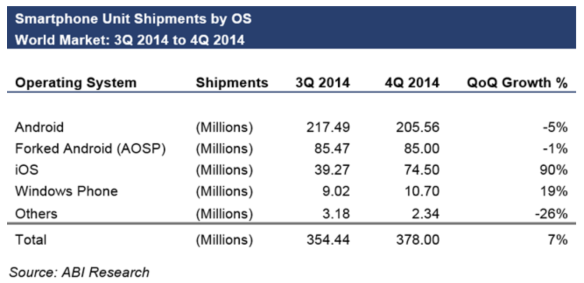
- The success or not of Ubuntu Phone will depend in large part on whether users are persuaded by Scopes, their fresh new approach to break the mobile app hegemony. FastCompany see UX as the central pillar of Canonical’s strategy:
“Scopes are essentially contextual home-screen dashboards that will be much simpler and less time-consuming to develop than full-on native apps. They function by presenting related content from different providers alongside each other on one screen. .. The user experience offered by Scopes seems a lot more intuitive than the “app grids” that dominate most devices. Apps offer distinct, siloed chunks of information or content. But what users are really after is the content those apps bring them. If apps are content silos, Scopes are windows into each silo showing exactly what you need when you need it.”
- The Samsung Z1, their first Tizen phone, is intended to be their best candidate to break the Apple-Google duopoly on mobile. This hands-on review suggests it still feels like “a bad Android clone“.
- The strategic goal for Tizen is to get to the same place Google are already at with Android, namely locked down but expressive native and web APIs for application developers with open source underneath for ease of porting:

- However it’s been a tortuous journey so far over the last decade with many tributaries leading to Tizen. The Samsung Z1 runs Tizen 2.3 with a 64-bit version 3.0 being worked on which Samsung hope will become the “Highlander of the mobile world“. However the family tree below doesn’t take into account another industry mobile Linux initiative namely Firefox OS which added Qualcomm SoC and LTE support in 2014:
“The Linux-based OS is an amalgamation of every other failed or aborted Linux smartphone platform. If it’s Linux-based and not made by Google, there’s a good chance it’s been rolled into Tizen at some point.“
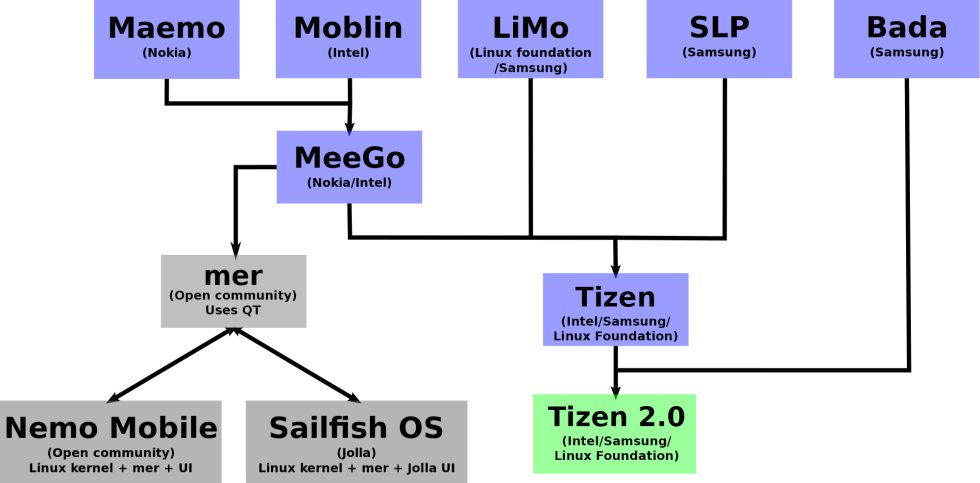
- Against this muddied backdrop Microsoft ought to be a real contender with struggling OEMs. Indeed news has emerged that Samsung may be opting to ditch its own bloatware in favour of Microsoft apps on the Galaxy S6. Nevertheless Windows Phone remains in the doldrums one year on from Satya Nadella taking over as CEO. In spite of that, The Verge and many others reckon he’s had a strong first year in command as looks forward to the formidable task of uplifting consumer sentiment around Windows:
“We want to move from people needing Windows, to choosing Windows, to loving Windows,” said Nadella at a recent press event for Windows 10. “That is our bold goal”.”
Apple
- Fascinating insight into how Apple’s power can make or break even a large component supplier, in this case touchscreen manufacturer Wintek.
- Asymco’s growth scorecard for Apple contains this arresting data point:
“the Mac has been outgrowing the Windows platform for 34 out of the last 35 quarters.”
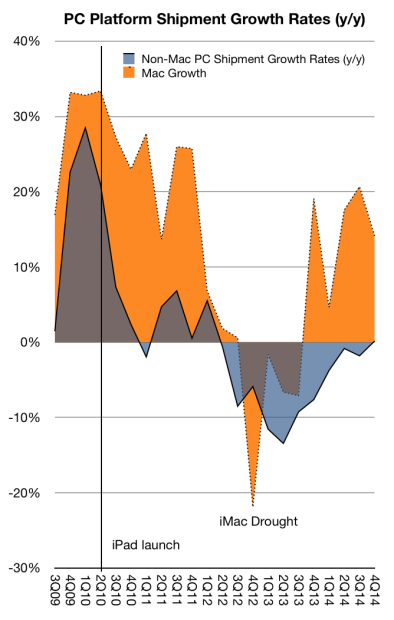
Google and Android
- Google Maps is one of the company’s most important properties and the basis for their self-driving car ambitions. Recode examine how it all got off the ground ten years ago:
“In 2005, nobody really knew what would come of online maps, or how they would become such a crucial aspect of daily lives in the Internet-connected world.”

- YouTube is also 10 years old this week and according to The Guardian has morphed into “the most interesting place on the internet“. Here’s the first ever clip:
- Google are “testing a service on the Play Devices page that connects you to a Google Device Expert through Hangouts“. TechCrunch are positioning it as a “virtual Google Genius bar”:
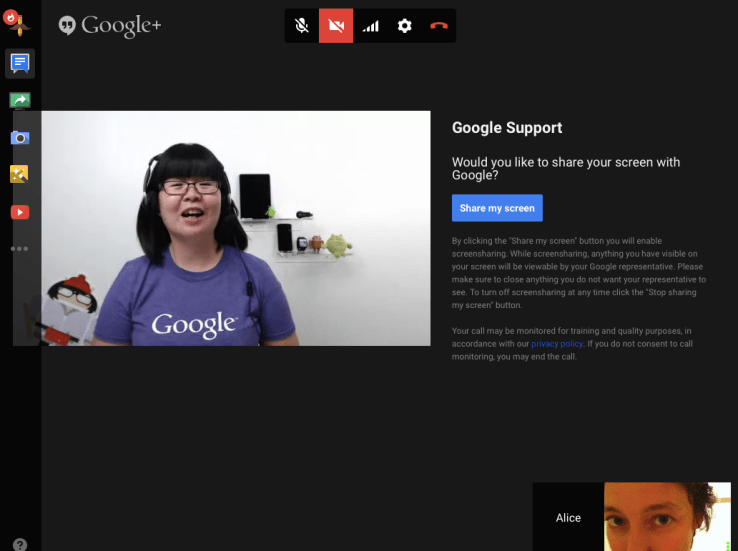
Apps and Services
- According to DeveloperEconomics “90% of developers have implemented a third party analytics SDK into their app” and yet “only 5% of these developers knew what to do with the data points which they were tracking“. They’ve published a guide reviewing some of the key metrics developers should take note of from Cost Per Install (CPI) to Session Length, Time Spent in App, DAU and MAU (daily|monthly active users) to Lifetime Value (LTV) and Average Revenue Per User (ARPU),
- Apadmi have published the responses from a useful expert round table session on mobile application lifecycle management best practice including important insights into generating exposure, advertising and review management.
- Flipboard have finally introduced a web app property having achieved all their success to date through their mobile only suite. Some are contesting whether it is a real mobile web app because it is built around content rendered entirely in Canvas.
- Flipboard don’t quite make TechCrunch’s $1billion+ “mobile unicorns” market valuation pyramid though they must be close to the bottom layer. There are 68 companies in the pyramid spread in a power law arrangement representing a whole slew of mobile service propositions:
Mobile unicorns multiply to hit a quarter of a trillion dollars http://t.co/lwZfkL6rI0 pic.twitter.com/n5OFJ4XtKx
— TechCrunch (@TechCrunch) February 14, 2015
Asia
- TechList is a paid service spun off from the TechInAsia site that provides a “treasure trove” of information about Asian startups, a very fast growing area:
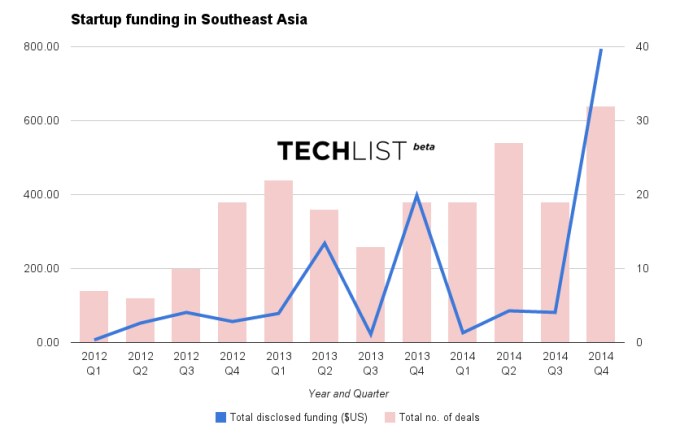
- Alibaba announced a $590million stake in domestic OEM Meizu which has around 2% market share in China. It’s an attempt “to expand its mobile operating system in a shrinking, cut-throat handset market.“
- By way of example, Chinavision are offering a Siswoo 4G LTE Mediatek MTK6595 octocore Android 4.4-based smartphone called the Monster for sub-£200:

- It maybe a cutthroat market but as TechInAsia highlight, there is an upper ceiling of around $480 that Chinese domestic OEMs cannot seem to break which is precisely the high end luxury niche that Apple are prospering in:
“the rise of Chinese brands in the smartphone market does have its limit. There is one place that Chinese brands, at least for the moment, simply can’t go. One barrier that no one has been able to successfully break. That barrier? RMB 3,000.”
- WSJ have picked up with the news recently reported that Apple is China’s top luxury brand with seemingly more headroom for growth in terms of brand, geography (specifically Western China) and new product possibilities:
“Apple’s positioning in Chinese consumers’ minds is getting stronger. Apple Watch should definitely benefit from this position,” said Neil Shah, analyst at Hong Kong-based Counterpoint research.
- Counterpoint also reported that the three biggest markets for smartphone growth in Asia outside of China are India, Indonesia and Bangladesh.
- Counterfeit fashion shoot in China shows how sophisticated fake luxury styling can be:

Networking
- Fascinating insight in this priceonomics post into how ants discovered TCPIP routing millenia before humans. If appears that the ‘anternet’ existing long before the internet:
“If we consider that the ant colony’s goal is to collect more food and expend fewer ants, and a server’s goal is to send a file and avoid congestion or overload, then the similarities are clear. Sending a packet through the internet is analogous to releasing a forager ant into the wild. Getting an ack of a packet’s receipt is analogous to a forager ant returning with food.”
- The post goes onto to outline a range of biological analogues for human algorithms:
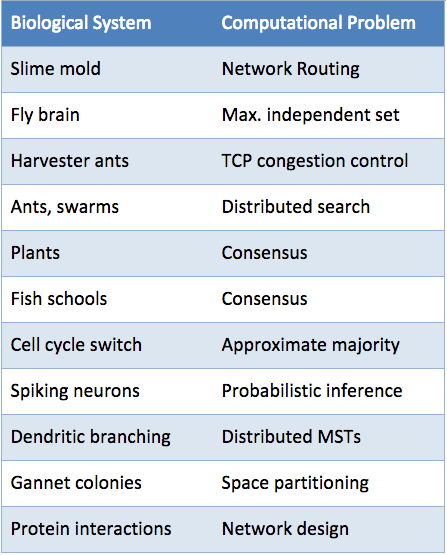
Machine Learning and Big Data
- Facebook is getting better at auto-tagging users in uploaded photos thanks to its DeepFace deep learning facial recognition software.
- In another application of facial recognition technology that raises uncomfortable questions, crockpotveggies.com posted this admittedly impressive technical hack. It involves automating Tinder to identify the k Nearest Neighbour ‘eigenfaces’ relative to a facial model built from likes/dislikes followed by the use of NLP to initiate and control follow-up messaging interactions. The most disturbing aspect is how successful the bot has been at harvesting potential dates.
- One face that’s notoriously hard to find is that of Wally in the famous Where’s Wally series of puzzle books. Turns out that machine learning in the form of a genetic algorithm can be applied to determine the optimal search path for finding him on a page:
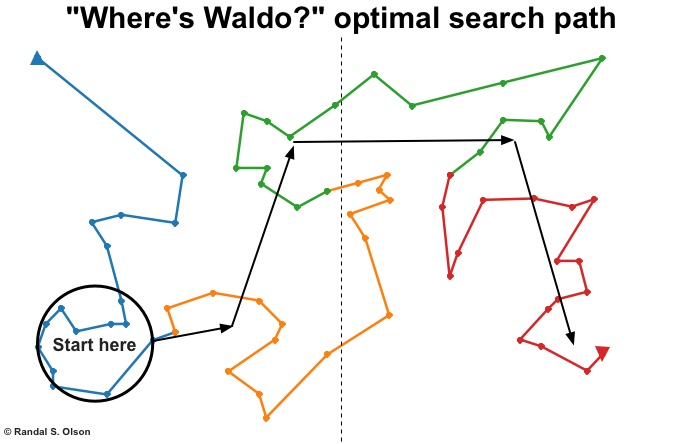
- The deep learning applications highlighted above involve predictions made with unsupervised or reinforcement (aka semi-supervised) machine learning techniques such as clustering or genetic algorithms. Predictive machine learning, however, is a broader discipline which also takes in less glamourous supervised approaches such as regression or Bayesian classification.

- A good introduction to working with Spark through the medium of Python to implement analytic workflows using the PySpark library. And staying with Python, this very useful post provides an invaluable guide to getting started with data science using important online resources and Python tools.
- Evidence of the lucrative potential of sports data from the story of stats startup Automated Insights.
Smart Retail
- Google may be trying a new approach with mobile payments with a new software-based system called Plaso intended to disrupt the EPOS end of the transaction:
“Plaso appears to be using Bluetooth beacon technology to detect Google’s digital payments apps on smartphones physically in the store or near check out.”
- Excellent and insightful post from a member of staff at the Brooklyn Museum responsible for a large scale deployment of iBeacons there. It covers a range problems encountered from batteries running down to beacons detaching from adhesive. The museum ended up using this “beacon installer cart” to aid the process:

Wearables and the Internet of Things
- This Benedict Evans post on the enduring attraction of the tangible in an increasingly digital world represents a timely starting point for the section this week. For Evans, “connected objects” have a place particularly in a world replete with cheap smartphone supply chain components. Mobile apps too have a physical aspect for him:
“There’s a sense that by getting an app you have somehow captured what’s inside it – pinned it to your home screen like a collector’s butterfly. … An app is tangible – it’s a thing that you have and keep and can’t lose or forget. “
- Ruby is a high-end voice wearable aimed at the fashion-conscious decorated with “precious metals and crystals”. The product of Silicon Valley startup Orion Labs, it is essentially a luxury Bluetooth headset:

- Another US startup, Trellie, are offering a compact white label smart Bluetooth LE module that can be easily mix and matched into a wide range of personal accessories. It should prove attractive to fashion brands looking to get into the smart jewellry space:
“Trellie makes a small “nugget” around 15 mm x 10 mm in size that can be moved in between different accessories, like rings and bracelets. In conjunction with a mobile application, Trellie’s smart jewelry can light up or vibrate when you’re receiving calls or texts, or it can notify you of calendar events, and soon, more.”
- The Apple Watch will launch with 34 different base variants thousands of dollars apart ranging from Sports to Gold Editions.

Raspberry Pi 2
- The Raspberry Pi 2 was revealed to suffer from a curious bug:
“It turns out that if you try and take a photo of the Raspberry Pi 2 using a certain type of camera, it crashes and turns off. “
- The Raspberry Pi Foundation provided an in-depth explanation of the root cause which turns out to involve the physics of the photoelectric effect:
“the effect only happens under VERY specific circumstances. Flashes of high-intensity, long-wave light – so laser pointers or xenon flashes in cameras – cause the device that is responsible for regulating the processor core power to get confused and make the core voltage drop.”
Cars
- Where do you go after Apple? Tesla seems like an increasingly popular choice and for very good reason because advanced cars increasingly resemble computers on wheels.
“The company has hired at least 150 former Apple employees, more than from any other company, even carmakers.”
- Coincidentally, news has emerged that Apple are running a secret project codenamed Titan to build an electric car in a direct challenge to Tesla. The project reportedly has 1000 staff allocated to it:
“Car research could be another step in the same direction [as Apple Watch], with Apple exploring how its brand might translate to premium goods beyond just the home computing market.”
- A German company called Hella have a smart car “damage detection” proposition. They are:
“developing a smart body panel that uses a grid of foil-like pressure-sensitive electronic sensors (plus special algorithms) to detect when someone dents or scratches your vehicle.”
Work and Culture
- This Fred Wilson post introduces the Carlota Perez framework for understanding technological revolution in the context of capital markets. In that framework, crash and recovery always takes place between early adoption and mainstream acceptance:
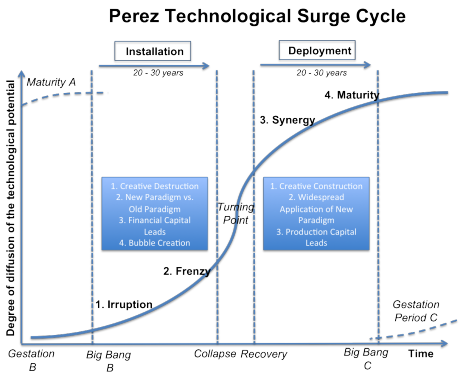
- Will the 21st century be defined by techno-data religions or recidivist religious zealots? Or are they ultimately the same thing? An interesting Google tech talk raises a number of profound considerations. A key one being that many of the most difficult questions society faces in the future regarding topics such as genetics, algorithms, robotics and nuclear energy are entirely outside the scope of mainstream religious scripture:
- Visualisation of fear of death vs. actual causes of death:
What you are afraid of vs what is likely to kill you via @businessinsider pic.twitter.com/tKuhmn3Y5i
— Martin Varsavsky (@martinvars) February 13, 2015
- There was another illustrious ten-year anniversary this week to accompany those of Google Maps and YouTube. Nathan Barley aged ten felt just as relevant and if anything an under-exaggeration in terms of what has come to pass since 2005:
- Another fantasy that hasn’t dated quite so well is the belief that globalisation is a rising tide that uniformly lifts all boats. The reality as pointed out by Pew Research is that real income growth has not been evenly distributed. In fact for the very poorest and developed world middle-class, income growth has been static or in decline over the last 20 years or so:

